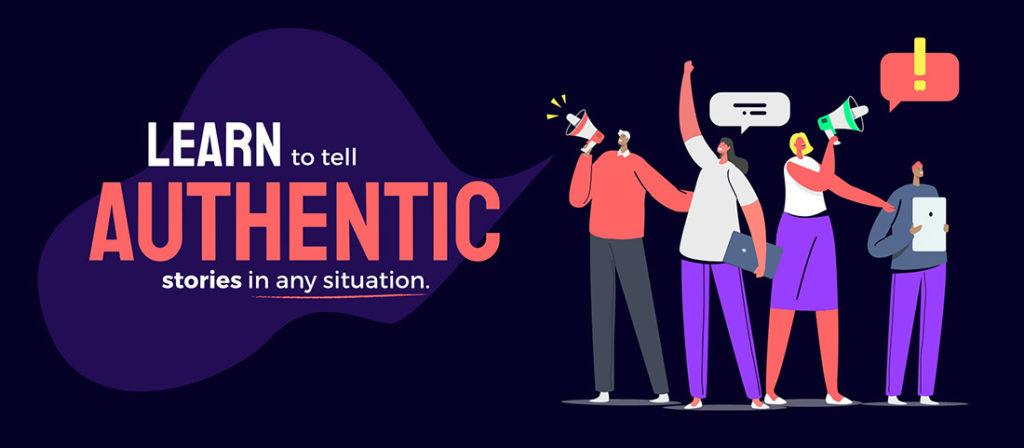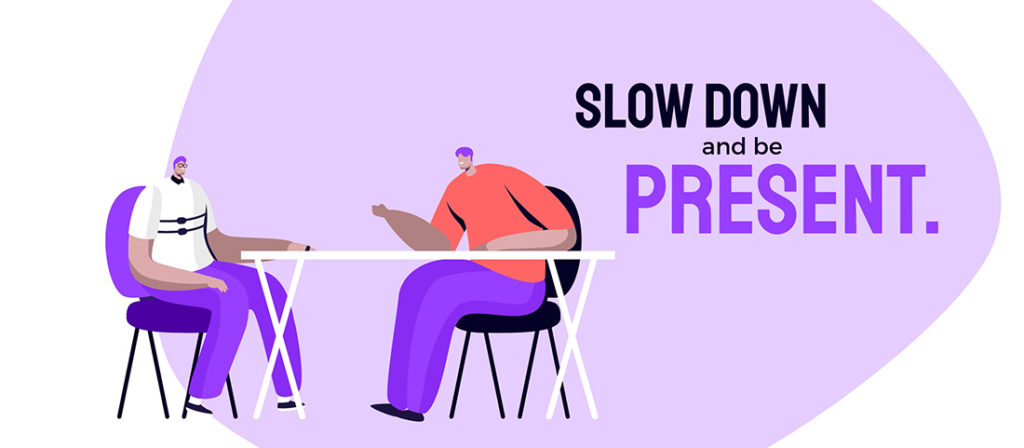Sales performance and vulnerability aren’t often linked. After all, it’s not professional to feel exposed, is it? See just how much your sales performance could be improved by going against the grain and getting vulnerable.
Adapting to increase sales performance
In our new world of remote working, many salespeople are trying to build client relationships without ever being in the same room. With trust being the foundation for any relationship, how do you earn a prospective client’s trust when you literally can’t see eye to eye?
Turning to the expert
Brené Brown is the expert in all things vulnerability, authenticity, and human connection. She wrote the book on it. In fact, she wrote many books on it. So, we couldn’t very well write an article on vulnerability without referring to Brown’s research.
By conducting and analysing thousands of interviews, across many years, Brown found that the key to real connection is vulnerability.
There can be no intimacy—emotional intimacy, spiritual intimacy, physical intimacy—without vulnerability.
Brené Brown
While many of us can likely see the benefits of being honest, unfiltered, and authentic in personal relationships by talking about our fears and needs with those we love, many people are reluctant to behave the same way in professional relationships.
Drop the mask to improve sales performance

We struggle with vulnerability because of fear. In the workplace, we fear it will make us look unprofessional or ruin our credibility. But, by putting on a corporate mask every time we pick up the phone, we’re distancing ourselves from our prospects and ruining our chances of making more sales and increasing our overall sales performance.
As humans, we actively disconnect ourselves from those we perceive to be inauthentic. If you catch on that someone is saying anything you want to hear, just to make a sale, you’ll start to go off that person pretty quickly. And your prospects are the same. To make these real, trusting connections that will lead to long-term partnerships, we need to let go of what we think that person wants to see from us, and be more us.
Being vulnerable humanises you. And people don’t want to buy products or services from robots. Once your prospect realises you’re a real person – flaws and all – they’re more likely to drop their guard – and their natural cautiousness – and engage with you. You won’t be seen as weak or inappropriate, overly friendly, or out of your depth. In fact, anything you fear will happen, anything that’s stopping you from taking the dive into authenticity, just isn’t going to happen. What will happen is more trust, more connections that count, and more sales.
How to add vulnerability to boost sales performance
According to the research, being vulnerable involves the following actions:
- Asking for what you need
- Being willing to expose your feelings
- Saying what you want
- Expressing what you really think
- Slowing down and being present
All these actions are not only preferable in personal relationships, but also throughout the sales cycle. Let’s take a look at how you can bring each one into the workplace to improve your sales win rate.
Ask for what you need
Vulnerability is about allowing yourself to try – whether that’s to try a new way of approaching prospects or a new way to speak about your solutions – without any guarantees of success. One immediate way you can introduce the thrill of the new into your sales interactions is by being upfront about what you need, rather than only focusing on the needs of the prospect.
Tell your potential new clients what is expected of them – and what will be expected moving forwards – in that first call. It’s tempting to only talk about the benefits of your products and services and how they will change the person’s life, but leave out any of the areas where they are going to have to get involved for the greatest result.
While taking the weight off their shoulders may be a key selling point, if it’s not an entirely one-sided process, don’t make it out to be one. In explaining why their input is important, you’ll not only show your credibility, but you might be able to inflate their ego a little at the same time.
No relationship will work if one party is getting all their needs met and the other is getting nothing. Try communicating the reality of the situation and putting your needs on the table from the start, and you won’t only benefit from an initial boost to your sales performance, but you’ll likely increase your repeat client numbers as well.
Be willing to expose your feelings
Most people, at one time or another, have tried to repress emotions in the workplace at the risk of looking unprofessional. But acknowledging and sharing our feelings is an important part of building and strengthening our connections with others, even when those others are brand new clients. There are a few ways to approach this, while remaining professional:
Admit knowledge gaps
In the wildly-popular TED talk, “The Power of Being Vulnerable,” Brené Brown discusses the emotional connections that form when we’re brave enough to share our imperfections. Admitting your mistakes can help new people feel more comfortable around you. After you put them at ease, they’ll be more open about their own pain points, and you’ll be able to get more useful information out of them. This type of vulnerability can also be as simple as admitting when you don’t have an answer. By being unusually honest, the prospect is more likely to believe what you say moving forward.
Look for these opportunities to arise naturally. Take a look at this transcription of a recent Buffalo 7 new business call as an example:
A peek behind the curtain
Prospect: I want to give my team something they can use to make presentations quicker and easier.
Business Development: Believe me, I know the struggle. I work for a PowerPoint design agency, but I’m not too proud to admit I’d make a real mess of presentations without a template built by someone who knows what they’re doing.
Prospect: Oh, you have not seen messy yet. Wait until I send you some of the examples my team are putting in front of clients. I spend a lot of my time fixing their fonts, realigning elements – and I’m hardly adept myself.
Once our Buff had humanised the struggle and made the prospect feel at ease, they opened up about the other motivations and challenges, beyond the initial timesaving admission. This not only allows us to understand the extent of their brief and create a better final result, but it gave our Business Development Manager an opening to discuss further solutions for this client, such as training for their team.
Tell stories

Another way to be open about your feelings with clients is to tell real, honest stories. If they ask you how your weekend was, consider telling them the warts-and-all version, not the business-professional version. If you plonked your child in front of the TV because you really needed a break and a w(h)ine, tell them that. They’re more likely to connect with this story than a curated one about how perfectly well-behaved your offspring are.
Ask questions

Your product or service is supposed to solve a problem for your audience. And salespeople are supposed to be the ones that show them how they can solve this problem, and all the benefits that will follow. But, without vulnerability, people don’t allow themselves to admit there is a problem. And you’ll never be able to improve sales performance if you don’t really get to know your prospects.
If we can’t be real, honest, open, and vulnerable with each other, there is no way to talk at the level of detail needed to get better results. Talking about failure requires being vulnerable. But salespeople need to lead the way, to encourage the same authenticity in response.
Ask the right questions to make your prospects feel comfortable revealing their own feelings. You don’t need to show up, pretending to be an expert in their business. You need to be vulnerable enough to admit you don’t know and let them teach you. Ask sophisticated, smart questions so that you still appear prepared and credible, but without coming across as a smart arse.
Say what you want.
As well as being upfront with prospects about what you need, at some point you’re going to have to drop your secret salesperson persona and tell them what you’d like to propose as a solution to their problem. Yes, you actually need to sell in order to increase sales performance.
You’re right, no one likes to be sold to. But if you never move the conversation into a frank and honest discussion about deliverables and costs, you’re just using company time to make friends.
Tell them what you want and tell them why it will solve all their problems.
Express what you really think
In addition to expressing our wants and needs in client relationships, it’s important to be honest about our point of view, our opinions, and what’s going on in our big ol’ brains.
Instead of pretending to be the quintessential businessperson, why not try letting the mask drop and expressing an unfiltered opinion? You may just find you instantly create an environment of trust between you and your customers.
If you don’t think the solution they’re asking for is going to make a positive difference, tell them.
If you think there’s a better way, challenge them.
If they think their current solution is great, but you know otherwise, show your expertise. Point out areas for improvement and the benefits these changes would bring.
If you can’t hit their deadline, don’t leave it to someone in another team to let them down later.
Often, by being upfront about limitations, you’ll not only enhance the trust, but also be able to find another solution, together.
A Buffalo 7 sales performance example
We never stop talking about the importance of storytelling when it comes to presentations. However, our full-fat storytelling services are in-depth and can add a week or so to a project timeline. Some deadlines just don’t allow it, no matter how much a client’s presentation would benefit from it. To combat this, we also offer content reviews. These are less time intensive, but add incredible value. Firstly, we remove any grammatical issues or spelling mistakes that could ruin a presentation. Then, we go on to offer suggestions for improvements that the client can either take on or not. Whether that’s in terms of narrative, missing messaging, or areas that could be built on.
It was only by being upfront about limitations that we were able to develop another solution, and add value to our offering.
Slow down and be present

Most of adult life is thinking about the next thing on that never-ending to-do list. But, if we’re stuck in our own heads, we miss out on opportunities for connection.
Even if a client, or prospective client, interrupts you in the middle of an important task, learn to put things to one side and give them the time they deserve. When you go to meetings, make sure all your notifications are turned off. Leave your phone at your desk. Make a conscious effort to put distractions – both physical and mental – to one side so you can focus on the person in front of you.
And – in a full-circle moment – tell them what you need by asking them to do the same. It will do wonders for the relationship in both directions.
Final words of wisdom on sales performance
Despite our encouragement to forget everything you know about conducting business, we do have to issue some words of caution.
There’s a time and a place for vulnerability. Blow them away with displays of credibility before admitting to knowledge gaps. Tell them what you can do before discussing limitations. And at least say hello before telling them their PowerPoint presentation sucks. That’s just common courtesy. Common courtesy that we audaciously ignore on the home page of our website. But we are bloody rebellious, after all.
Learn to tell authentic stories in any situation
Vulnerability is a powerful thing, and – like all powerful things – needs to be used by someone who knows what they’re doing. Finding this balance of credibility and authenticity is one of the foundations of storytelling. The greatest storytellers know how much to show – and when – in order to captivate their audience and have them hanging on their every word.
And you can learn this skill.
Our storytelling training will certainly get you and your team writing incredible presentations. But it’s so much more versatile than that. Once you know the secrets of storytelling, there’s no communication situation you won’t be able to apply it to. Including sales calls. Learn how to tell your story in a way that your audience will connect to. And show your authentic self with purpose and amazing results.


